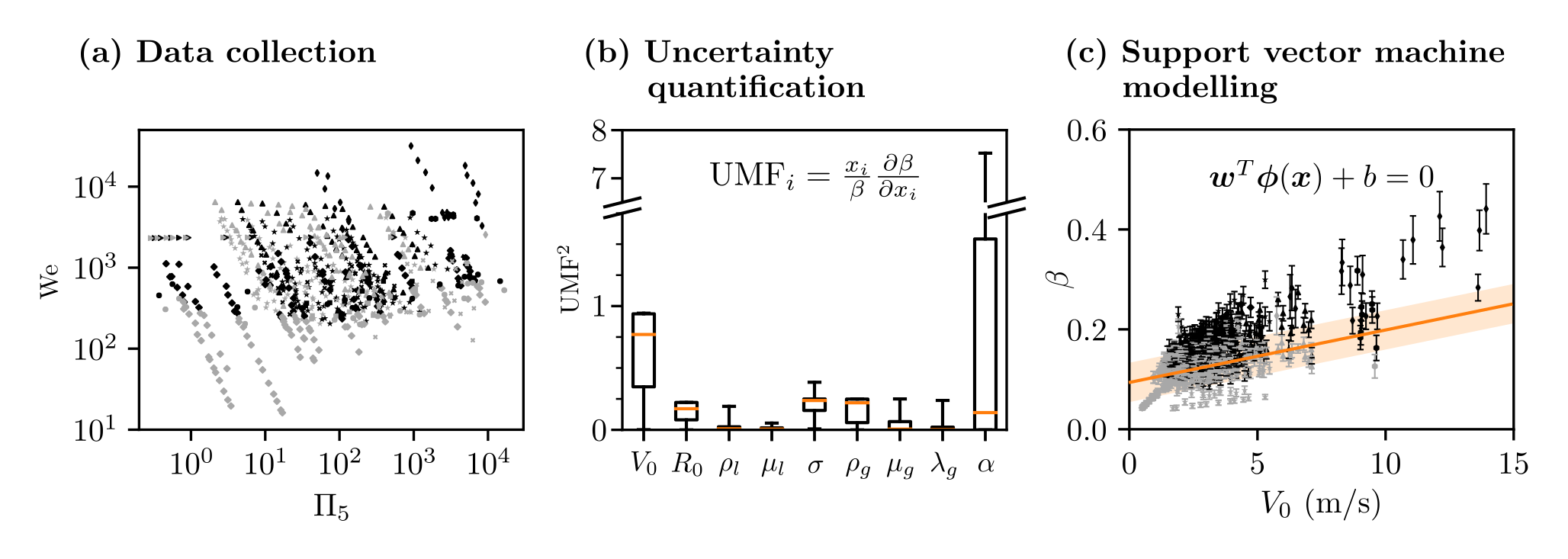
We propose a data-driven threshold model to redefine the boundary between deposition and splashing for drop impact on dry smooth surfaces. The starting point is the collection and digitization of multiple experimental sources with varying impact conditions. The model is based on the theory of Riboux and Gordillo [Riboux and Gordillo, “Experiments of drops impacting a smooth solid surface: A model of the critical impact speed for drop splashing,” Phys. Rev. Lett. 113, 024507 (2014)] and is obtained by an uncertainty quantification analysis coupled with machine learning. The uncertainty quantification analysis elucidates the relevance of the impact condition uncertainties when estimating the splashing parameter. The proposed threshold model is trained using a support vector machine algorithm variant that includes uncertainty as a hyperparameter. This threshold model is generalized by complexity reduction and is eightfold cross-validated on the reference data. The results reveal a dependency of the splashing threshold on the impact velocity, the liquid viscosity, the surface tension, and the gas density. Detailed quantification of the prediction performance and a comparison with state-of-the-art models show that the proposed threshold model is the most accurate model to describe the boundaries between deposition and splashing for a wide range of impact conditions. The simplicity and accuracy of this model make it an alternative to existing approaches.